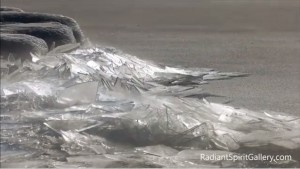Here’s a very interesting story about some work done by John Magnuson, one of my colleagues from my days in Wisconsin. John is an expert in ice-off dates on lakes, and this story is about how he and some other scientists were able to decipher two very long records of ice dates kept by monks in Japan and by Finnish merchants on the Torne River between Finland and Sweden.
An excerpt from the National Geographic story says “The results of their study, published today in Nature Scientific Reports, show that since the Industrial Revolution, changes in the timing of freeze and thaw have accelerated, and suggest that the yearly rhythm of the ice in both places has become more closely tied to the concentrations of carbon dioxide in the atmosphere. Extreme events have become more common, too: In the first 250 years that Shinto priests recorded the appearance of the ice ridge on Lake Suwa, for instance, there were only three years during which the lake did not freeze. Between 1955 and 2004, there were 12 freeze-free years on Lake Suwa; between 2005 and 2014, there were five. (Magnuson reports that the lake did not freeze during the winters of 2015 or 2016, either.)” You can read more here.
